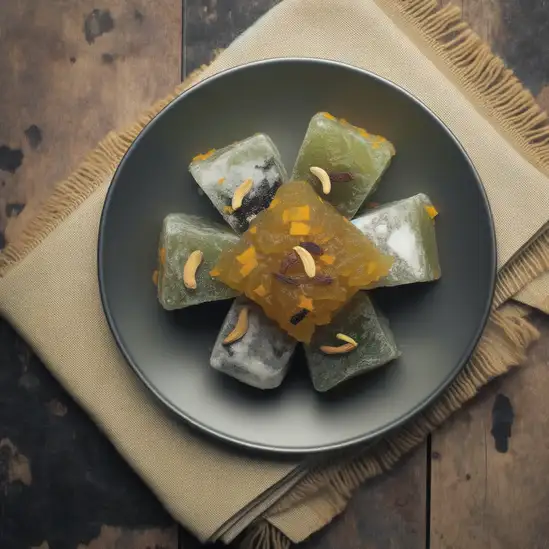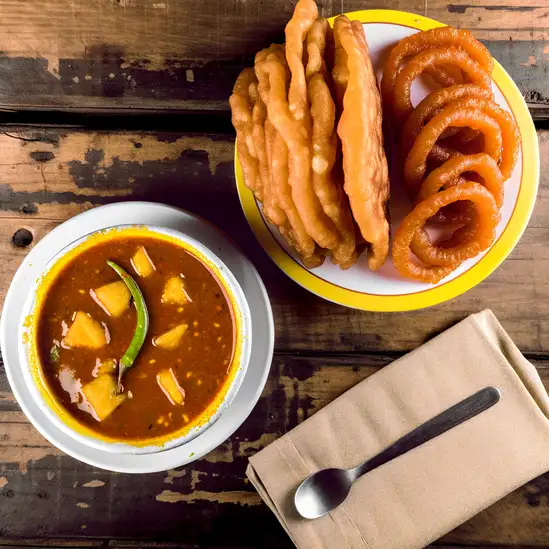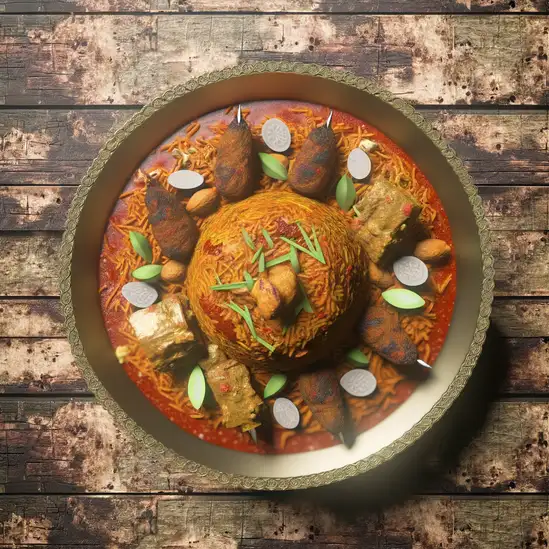


If you find yourself wandering through Agra,you’ll quickly realize it’s a city that hums with history and heart. There’s this undeniable energy in the air,a mix of ancient stories and everyday life unfolding right before your eyes. The moment you step out,the warm sun casts a golden glow over the red sandstone walls,and the distant silhouette of the Taj Mahal feels like a quiet promise waiting to be explored. It’s not just a place to see a monument; it’s a place where the past and present dance together in the bustling markets and narrow lanes. Walking through Agra’s streets,you’ll hear the lively chatter of vendors,the clinking of chai glasses,and the occasional call of a street musician. The scent of spices—cardamom,cumin,and saffron—mingles with the sweet aroma of jalebis frying in roadside stalls. Don’t miss tasting the local flavors; the rich,creamy petha candy and the spicy,tangy chaats are little bursts of joy that tell you more about the city’s soul than any guidebook ever could. What makes Agra truly special is its warmth and resilience. Beyond the Taj Mahal’s marble beauty,you’ll find friendly faces eager to share stories,craftspeople shaping marble in the same way their ancestors did,and a culture that embraces both tradition and the vibrant chaos of daily life. Visiting Agra feels like stepping into a living tapestry—colorful,textured,and utterly unforgettable.
The information on this page is currently being reviewed by Tripkliq and should be used as a guide only
Eng word: Hello
Eng pronunciation: Namaste
Local language: नमस्ते
Eng word: Goodbye
Eng pronunciation: Alvida
Local language: अलविदा
Eng word: Thank you
Eng pronunciation: Dhanyavaad
Local language: धन्यवाद
Eng word: How much
Eng pronunciation: Kitna
Local language: कितना
Eng word: Toilet
Eng pronunciation: Shauchalay
Local language: शौचालय
Eng word: Help me
Eng pronunciation: Meri madad karo
Local language: मेरी मदद करो
Eng word: Yes
Eng pronunciation: Haan
Local language: हाँ
Eng word: No
Eng pronunciation: Nahi
Local language: नहीं
Eng word: Excuse me
Eng pronunciation: Maaf kijiye
Local language: माफ़ कीजिये
Agra is world-renowned for housing the Taj Mahal, a UNESCO World Heritage Site, widely considered the epitome of love and one of the finest examples of Mughal architecture.
In the 16th and early 17th centuries, Agra served as the capital of the Mughal Empire under Emperor Akbar, Jehangir, and Shah Jahan, becoming a center of art, culture, and commerce.
Another UNESCO World Heritage site, Agra Fort, is a grand fortification built by Emperor Akbar in 1565, showcasing the rich architectural heritage of the Mughal era.
Located near Agra, Fatehpur Sikri is a beautiful city founded by Emperor Akbar in the 16th century, famous for its magnificent palaces, halls, and mosques.
Often referred to as the 'Baby Taj', the Tomb of Itimad-ud-Daulah is a Mughal mausoleum and is considered a precursor to the Taj Mahal for its intricate carvings and inlay work.
Agra hosts the annual Taj Mahotsav, a 10-day event showcasing the rich arts, crafts, culture, cuisine, and vibrant history of the region, attracting tourists from across the globe.
Agra is the birthplace of Akbar the Great, one of the most influential Mughal emperors, known for his innovative administrative practices and for promoting religious tolerance.
The Mughal Heritage Walk offers a unique chance to explore Agra’s rich history by walking through Kachhpura village, providing scenic views of the Taj Mahal, Agra Fort, and Mehtab Bagh.
Mehtab Bagh, or 'Moonlight Garden', is believed to have been designed by Shah Jahan to view the Taj Mahal under the soft moonlight, offering spectacular views of the monument.
In Agra, the most common Power Adaptor is Type C, Type D, Type M.







A popular sweet made from ash gourd, sugar, and flavors like saffron and cardamom. It is a specialty of Agra and comes in various flavors like kesar (saffron), paan (betel leaf), and more.

A popular breakfast dish in Agra, Bedai is a deep-fried bread made from wheat flour and served with a spicy potato curry. It is often paired with sweet and crispy jalebi, a popular Indian dessert.

Agra is known for its delicious tandoori chicken, marinated in a blend of yogurt and spices, and cooked in a tandoor (clay oven) to perfection. It is a must-try dish for meat lovers visiting the city.

Agra is famous for its Mughlai cuisine, which includes dishes like biryani, kebabs, and korma. These dishes are rich in flavors and are a legacy of the Mughal era in the city.
Imagine stepping into a city where every corner bursts with color and history,where the air hums with the rhythm of bustling markets and distant temple bells. That’s Jaipur for you — a place that feels alive,warm,and endlessly inviting. The moment you arrive,you’re wrapped in the soft pink hues of its famous buildings,earning it the nickname ''Pink City,'' but it’s the energy beneath those walls that truly captivates. You’ll find yourself wandering through narrow lanes lined with shops selling everything from glittering textiles to fragrant spices,the scent of cardamom and saffron mingling with the earthy aroma of fresh marigold garlands.
Jaipur’s character is a beautiful blend of royal heritage and everyday life. The majestic Amber Fort looms above the city,its sandstone walls glowing golden in the late afternoon sun,while below,locals chat animatedly over cups of chai sweetened with jaggery. The city pulses with festivals,music,and the clatter of artisans crafting intricate jewelry or block-printing fabrics. It’s a place where tradition and creativity dance together,inviting you to slow down and soak it all in.
And the food! Oh,the food is a journey itself — rich,spicy,and comforting. Think buttery dal bati churma,crispy kachoris,and sweet,syrupy jalebis that melt in your mouth. Jaipur doesn’t just show you India’s past; it invites you to live it,taste it,and feel it in every vibrant moment.
If you ever find yourself wandering through Varanasi,get ready to step into a world where time feels both ancient and alive. The moment you arrive,there’s this unmistakable hum—a mix of temple bells,chanting voices,and the gentle lapping of the Ganges—that wraps around you like a warm,familiar blanket. It’s a city that pulses with spirituality and everyday life all at once,where the sacred and the ordinary dance side by side.
Walking along the ghats at dawn is something else entirely. The air is thick with the scent of incense and marigold flowers,mingling with the earthy aroma of the river. You’ll see locals performing their morning rituals,dipping into the water,and offering prayers,while boats glide silently by,their oars slicing through the mist. The colors here are vivid—the saffron robes of monks,the bright saris of women,and the flickering flames of countless diyas floating downstream.
Varanasi’s streets are a sensory overload in the best way:the sizzle of street food stalls selling spicy chaat,the chatter of vendors bargaining,and the occasional stray cow weaving through the crowd. It’s a place that invites you to slow down,soak in its layers of history and devotion,and maybe even find a little peace amid the chaos. Trust me,once you’ve experienced Varanasi,it stays with you—like a story you want to tell over and over.
Imagine stepping into a place where the sun kisses your skin,the salty breeze carries the laughter of beachside chatter,and every corner hums with a laid-back yet vibrant energy—that’s North Goa for you. It’s a lively patchwork of golden sands,swaying palms,and colorful shacks where the aroma of sizzling seafood mingles with the faint scent of frangipani flowers. Whether you’re wandering through the bustling markets of Anjuna or watching the sun dip behind the waves at Calangute,there’s a rhythm here that feels both timeless and alive.
What really makes North Goa special is its blend of cultures and carefree spirit. You’ll find Portuguese-influenced architecture standing proudly alongside lively street art,while the music—from mellow acoustic sets to pulsing electronic beats—drifts through the air,inviting you to join in. The locals,warm and welcoming,add a genuine charm that makes you feel like you’re part of a big,sun-soaked family.
And the flavors! Freshly caught fish grilled with spices that tease your taste buds,tangy Goan curries,and sweet,creamy feni that’s perfect for toasting to new adventures. As night falls,the beach transforms into a playground of bonfires and music,where stories flow as freely as the ocean breeze. North Goa isn’t just a destination; it’s a feeling—a place that stays with you long after you’ve left.
Imagine stepping into a place where the air hums with the gentle rhythm of waves lapping against sun-warmed shores,and the scent of salty sea mingles with fragrant street food stalls. That’s Phuket for you—a vibrant island that feels alive in every sense. It’s not just the stunning beaches that grab you,but the way the island pulses with a laid-back energy,where colorful markets buzz with chatter and the aroma of grilled seafood fills the air. Walking through the old town,you’ll find charming Sino-Portuguese buildings painted in pastel hues,their shutters creaking softly in the tropical breeze,while tuk-tuks zip by,adding a playful soundtrack to your explorations.
Phuket’s character is a beautiful blend of tradition and liveliness. Temples with golden spires peek out from lush greenery,inviting quiet moments of reflection,while nearby,night markets burst with life—vendors calling out,sizzling woks,and the sweet tang of mango sticky rice tempting your taste buds. The island’s culture is warm and welcoming,with locals who smile easily and share stories over cups of strong Thai coffee or fresh coconut water.
What makes Phuket truly special is how it wraps you in its embrace—whether you’re watching a fiery sunset from a cliffside bar,diving into crystal-clear waters teeming with vibrant marine life,or simply savoring the spicy kick of a freshly made curry. It’s a place that invites you to slow down,soak in the colors,sounds,and flavors,and leave with a heart full of unforgettable moments.
Bali feels like stepping into a vibrant dream where every corner pulses with life and warmth. From the moment you arrive,there’s this unmistakable energy—part spiritual,part playful—that wraps around you like a soft,tropical breeze. Imagine waking up to the gentle rustle of palm leaves and the distant sound of waves crashing against volcanic black sand beaches. The air carries a mix of frangipani blossoms and salty sea spray,instantly grounding you in the island’s natural beauty.
What really makes Bali special is its rich culture woven into everyday life. You’ll see locals in colorful sarongs offering flowers at temple steps,hear the rhythmic beat of gamelan music drifting through the air,and catch glimpses of intricate wood carvings and vibrant paintings in small artisan shops. The island’s spirituality isn’t just something you observe—it’s something you feel,a quiet presence that invites you to slow down and connect.
And then there’s the food—oh,the food! Freshly grilled satay,fragrant nasi campur bursting with spices,and tropical fruits so sweet they almost taste like candy. Whether you’re dining in a bustling market or a cliffside café overlooking the ocean,every bite feels like a celebration of Bali’s rich flavors and traditions. Honestly,Bali isn’t just a place you visit; it’s a place that stays with you,long after you’ve left.
Imagine stepping into a place where the future meets tradition in the most dazzling way—that’s Dubai for you. The moment you arrive,there’s this electric buzz in the air,a mix of ambition and warmth that’s impossible to ignore. Skyscrapers like the Burj Khalifa stretch into the sky,shimmering glass and steel reflecting the golden desert sun,while just a few streets away,you can wander through bustling souks filled with the scent of exotic spices and the chatter of friendly vendors. It’s a city that never feels cold or impersonal,even with its towering modernity.
Walking along the Marina at sunset,you’ll hear the gentle lapping of water against sleek yachts,the distant hum of conversations in dozens of languages,and the occasional call to prayer weaving through the air,grounding you in the city’s rich cultural tapestry. The food scene is a vibrant adventure—imagine tasting freshly grilled shawarma,sweet dates,and rich Arabic coffee,each bite telling a story of the region’s heritage and its global influences.
What really makes Dubai stand out is its fearless spirit. It’s a place where desert dunes meet luxury shopping,where traditional falconry coexists with indoor ski slopes,and where every corner invites you to explore something unexpected. Whether you’re marveling at art installations in Alserkal Avenue or catching the cool breeze on a dhow cruise,Dubai feels alive,inviting you to be part of its ever-evolving story.
Unlicensed money changers offer poor exchange rates or give counterfeit currency to unsuspecting tourists.
Scammers sell fake tickets to popular attractions like the Taj Mahal, leaving tourists unable to enter and out of pocket.
Individuals posing as official tour guides offer their services at inflated prices and provide inaccurate or misleading information.
Tourists are lured into shops where they are sold fake or overpriced gemstones under the guise of a great deal.
Drivers or guides take tourists to specific hotels where they receive a commission, often leading to subpar accommodations at inflated prices.
Vendors sell souvenirs at significantly higher prices than their actual value, often targeting tourists who are unfamiliar with local prices.
Locals offer to take photos of tourists and then demand an exorbitant fee for the service.
Tuk-tuk drivers quote exorbitant fares for short distances or take longer routes to increase the fare.
The use, possession, and trafficking of drugs are strictly prohibited in India under the Narcotic Drugs and Psychotropic Substances (NDPS) Act of 1985. This includes both recreational and medicinal drugs without proper authorization. Penalties for drug-related offenses are severe and can include long-term imprisonment and hefty fines. Tourists should exercise caution and avoid any involvement with illegal substances.
In Agra, as in the rest of India, smoking is prohibited in public places such as restaurants, hotels, public transport, and parks. The Cigarettes and Other Tobacco Products Act (COTPA) of 2003 regulates smoking in public places. Designated smoking areas may be available in some establishments, but it is advisable to look for signage or ask staff. Violations can result in fines.
Vaping is subject to strict regulations in India. The Indian government banned the production, import, sale, and advertisement of e-cigarettes and vaping products in September 2019. Tourists should avoid bringing vaping devices and e-liquids into the country, as possession can lead to legal consequences, including fines and imprisonment.
What are other people saying about Agra?
Recent Social posts about Agra
There is nothing to show you for now.